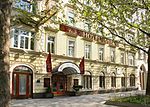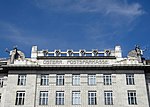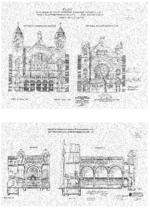Leopoldstädter Tempel

The Leopoldstädter Tempel was the largest synagogue of Vienna, in the district (Bezirk) of Leopoldstadt. It was also known as the Israelitische Bethaus in der Wiener Vorstadt Leopoldstadt. It was built in 1858 in a Moorish Revival style by the architect Ludwig Förster. The tripartite facade of the Leopoldstädter, with its tall central section flanked by lower wings on each side, became the model for numerous Moorish Revival synagogues, including the Choral Temple in Bucharest, which has an almost identical main facade, the Zagreb Synagogue, the Spanish Synagogue in Prague, the Tempel Synagogue in Kraków and the Grand Synagogue of Edirne. This temple was destroyed during the Kristallnacht on November 10, 1938. A memorial plaque on the site reads in German (and Hebrew): Hier befand sich der Leopoldstädter Tempel, der im Jahre 1858 nach Plänen von Architekt Leopold Förster im maurischen Stil errichtet und am 10. November 1938 in der sogenannten "Reichskristallnacht" von den nationalsozialistischen Barbaren bis auf die Grundmauern zerstört wurde. translated as: Here stood the Leopoldstädter Temple, built in 1858 in the Moorish style according to the plans of architect Leopold Förster, all but the foundation of which was completely destroyed by National Socialist barbarians on the so-called "Night of Broken Glass" on 10 November 1938.
Excerpt from the Wikipedia article Leopoldstädter Tempel (License: CC BY-SA 3.0, Authors, Images).Leopoldstädter Tempel
Tempelgasse, Vienna KG Leopoldstadt (Leopoldstadt)
Geographical coordinates (GPS) Address Nearby Places Show on map
Geographical coordinates (GPS)
| Latitude | Longitude |
|---|---|
| N 48.213888888889 ° | E 16.385 ° |
Address
Tempelgasse
1020 Vienna, KG Leopoldstadt (Leopoldstadt)
Austria
Open on Google Maps











